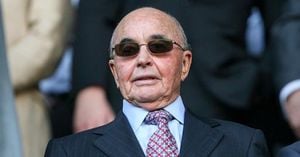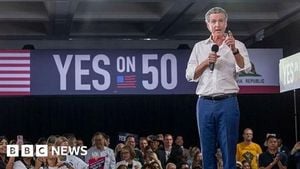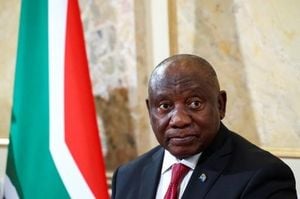As the tennis world gears up for the 2025 US Open, Novak Djokovic has once again found himself at the center of the sport’s most pressing debate: the controversial expansion of the Masters 1000 tournaments to nearly two weeks. With the first balls set to be struck on Sunday, August 24, Djokovic’s candid pre-tournament press conferences have sparked lively discussion across the ATP and WTA tours, revealing deep discontent among top players about a format that’s reshaping the professional calendar—and perhaps the very spirit of elite tennis.
Djokovic, a 24-time Grand Slam champion and former world No. 1, hasn’t minced words when it comes to the new Masters 1000 schedule. "I have noticed that a lot of top players have been quite opposing the new change of the almost two-week events, the Masters level. I support the players. But [at] the end of the day, when the players needed to be active and when there was a time of negotiations and decision-making, players weren’t participating enough," he told reporters ahead of his opening match in New York. The Serb’s comments were echoed by several of his peers, including Aryna Sabalenka, the current world No. 1 on the WTA side, who described the revised calendar as "crazy" and "impossible to handle."
The new format, which sees seven of the nine Masters 1000 events stretched to 12 days with 96-player draws, has fundamentally altered the rhythm of the tour. Only Monte-Carlo and Paris have retained their traditional one-week schedules. For Djokovic, the changes have prompted a significant shift in his own approach to the sport. "I decided not to play [since Wimbledon] because I wanted to spend more time with my family," he explained. "And to be honest, you know, I think I earned my right and have the luxury of kind of choosing, picking and choosing where I want to go and what I want to play. I don’t actually have any schedule other than Slams, to be honest."
Djokovic’s decision to skip the last four Masters 1000 tournaments—Madrid, Rome, Toronto, and Cincinnati—has been as much a personal choice as a professional one. The 38-year-old, who last played at Wimbledon in July 2025 (falling to world No. 1 Jannik Sinner in the semi-finals), is now openly prioritizing family and major championships over rankings or points accumulation. "For me, it’s really about where do I find motivation and joy? Where will I be inspired to play the best tennis? And where do I care to be, really, and play? And Slams are obviously the four main tournaments where I always feel the most motivation," Djokovic said. He even acknowledged the possibility of missing his daughter’s birthday on September 2 if he advances deep into the US Open, underscoring just how much family weighs in his current calculus.
But Djokovic’s critique of the Masters 1000 overhaul isn’t just personal—it’s political. As a former ATP player council president and co-founder of the Professional Tennis Players Association (PTPA), he’s long advocated for greater player involvement in tour governance. "This is an ongoing story of the players, particularly top players. They express their feelings, but then when you really need to put in the time and the energy into conversations, meetings, which I know it’s very difficult. I have been there, trust me, many times. But it’s necessary because then, you know, you’re doing something not only for yourself but future generations, and you’re making the right moves, the right steps and contributing," he emphasized.
Djokovic’s frustration is shared by a growing chorus of top athletes. Aryna Sabalenka didn’t hold back when asked about the relentless WTA schedule: "The schedule is really intense and it’s crazy what they [are] trying to make us do because we’re humans, like it’s impossible to handle this intensity. Every week is a mandatory tournament and the schedule is crazy, honestly," she told The Athletic earlier in August. Ben Shelton and Alexander Zverev have also been vocal critics, with Zverev noting during the National Bank Open in Toronto that he hasn’t "heard a single player say that they love the two-week Masters events" and expressing doubts about fan enthusiasm for the format.
Jannik Sinner, the reigning Wimbledon champion and world No. 1, added his perspective, saying he "loves the one-week events." The consensus among the sport’s elite seems clear: the extended Masters tournaments are taking a toll, both physically and mentally. The longer events mean a more condensed, high-stakes calendar, with less time for recovery and preparation between tournaments, and a season that now feels almost endless.
Despite the chorus of disapproval, Djokovic doesn’t see a reversal on the horizon. The current format is locked in by multi-year agreements between tournaments and the ATP and WTA tours, with significant financial investments already made in facilities and operations. "[It won’t happen] unless all the Masters events come together and the ATP board on the tournament side is supportive of the idea of going back, which I really doubt," Djokovic admitted. The implication is stark: unless there’s unprecedented unity among tournaments and governing bodies, the two-week Masters are here to stay.
The numbers tell their own story. Djokovic, who holds a record 40 Masters 1000 titles and has finished runner-up 20 times, has played only four of the eight events so far this season. He’s also skipped all four most recent Masters tournaments and hasn’t won a match at that level since the Miami Open in March 2025. His focus on the Grand Slams is now more pronounced than ever, and he’s hardly alone in that shift.
Djokovic’s opening match at the US Open pits him against Learner Tien, an ATP Next-Gen finalist who’s been making waves this season. While Djokovic’s quest for a record 25th Grand Slam title is sure to capture headlines, the broader debate about the sport’s direction looms large over Flushing Meadows. Will the extended Masters 1000 format ultimately benefit the sport, or will it drive more stars to adopt Djokovic’s selective approach? And will the players’ voices finally gain enough volume to prompt meaningful change?
For now, the action in New York takes center stage, but the undercurrent of discontent remains impossible to ignore. As the game’s biggest names weigh their futures—and their families—against the demands of a relentless calendar, tennis fans can expect the conversation to continue long after the last ball is struck at Arthur Ashe Stadium.




